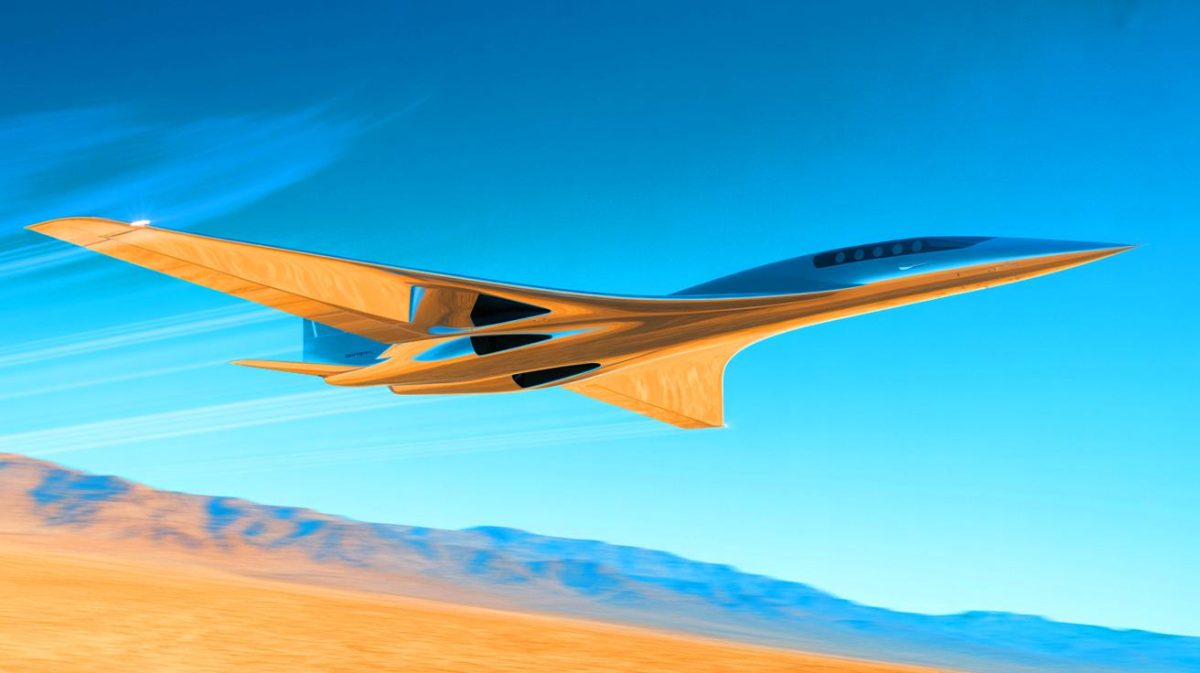| IN A NUTSHELL |
|
The resurgence of supersonic flight is on the horizon, as Boom Supersonic makes significant strides with its innovative aircraft, the XB-1. This cutting-edge jet recently achieved new milestones during a test flight at the Mojave Air & Space Port. As the first privately developed supersonic jet, the XB-1 serves as a precursor to Boom’s ambitious Overture project, which aims to revolutionize commercial air travel. With the legacy of the Concorde in mind, Boom is addressing past challenges to deliver a more efficient and environmentally friendly supersonic travel experience.
Breaking Barriers with the XB-1
Boom’s XB-1 has taken the aviation world by storm, setting new records during its fifth test flight. On October 7th, 2024, Chief Test Pilot Tristan “Geppetto” Brandenburg piloted the aircraft to a remarkable altitude of 17,800 feet and reached speeds of Mach 0.69, equivalent to 492 mph. This achievement marks a significant milestone for the supersonic jet, demonstrating its capability and potential. The XB-1 is equipped with GE J85-15 turbojet engines, a testament to the advanced engineering behind its design.
Throughout the development process, Boom has been meticulous in testing the XB-1. The aircraft’s flutter excitation system (FES) underwent rigorous evaluation, pushing the boundaries of structural integrity. This system deliberately introduces vibrations to identify potential issues, ensuring safety and reliability at higher speeds. By incrementally increasing the XB-1’s speed and altitude, Boom is laying a strong foundation for breaking the sound barrier in future tests.
The Legacy of the Concorde
The Concorde, an icon of aviation history, took its final flight over two decades ago. Known for its ability to fly at Mach 2, it reduced transatlantic flight times significantly. However, it faced challenges such as high fuel consumption and noise pollution caused by sonic booms. These factors, along with prohibitive costs, led to the Concorde’s retirement in 2003. Boom Supersonic is determined to overcome these hurdles, drawing lessons from the past to create a more sustainable and economical solution with the XB-1 and future Overture aircraft.
By addressing noise and environmental concerns, Boom aims to make supersonic travel viable once again. The Overture, designed to carry 64 to 80 passengers at Mach 1.7, will prioritize noise reduction and utilize sustainable aviation fuel. This approach aligns with modern environmental standards, paving the way for a new era of quiet, efficient supersonic flight.
Innovations for the Future
The XB-1 is more than just a test platform; it represents Boom’s commitment to revolutionizing air travel. The Overture, its successor, will operate primarily over water but has been designed to minimize sonic booms over land. This flexibility allows it to land on standard runways, unlike the Concorde’s requirement for extensive landing strips. The Symphony engine, developed in-house, will power the Overture, offering versatility in speed and operating on 100% sustainable aviation fuel.
Boom’s vision extends beyond technological advancements; it encompasses a commitment to environmental responsibility. By integrating cutting-edge technology with eco-friendly practices, Boom is setting a new standard for the aviation industry. The Overture promises to merge speed, efficiency, and sustainability, a combination that could redefine long-distance travel for generations to come.
Path to Commercialization
Boom Supersonic has set its sights on manufacturing the Overture by 2025, with test flights slated for 2027 and commercial operations expected by 2029. The excitement surrounding this project is palpable, as major airlines, including United Airlines, express interest in incorporating the Overture into their fleets. This enthusiasm underscores the potential impact of supersonic travel on the aviation industry and its ability to transform global connectivity.
As Boom continues to push the boundaries of what’s possible, it remains committed to ensuring that every aspect of the Overture aligns with safety, performance, and environmental goals. The meticulous approach to development, coupled with unwavering dedication to innovation, positions Boom Supersonic as a leader in the next chapter of aviation history.
With the promise of a new era of supersonic travel on the horizon, Boom Supersonic is poised to make a lasting impact. As the XB-1 paves the way for the Overture, one can’t help but wonder: How will the return of supersonic travel reshape the future of global air transportation?
Did you like it? 4.6/5 (30)









Wow, Boom Supersonic is really setting the pace for the future of air travel! 🚀
Are there any plans to make these flights affordable for the average person?
Interesting article, but how will this affect the environment? 🤔
Isn’t Mach 0.69 still far from breaking the sound barrier?
Great job, Boom! Looking forward to seeing this tech in action on commercial flights. ✈️
Hope this doesn’t end up like the Concorde—cool but too expensive to operate.
When can we expect to see the Overture in the skies? 2029 feels so far away!